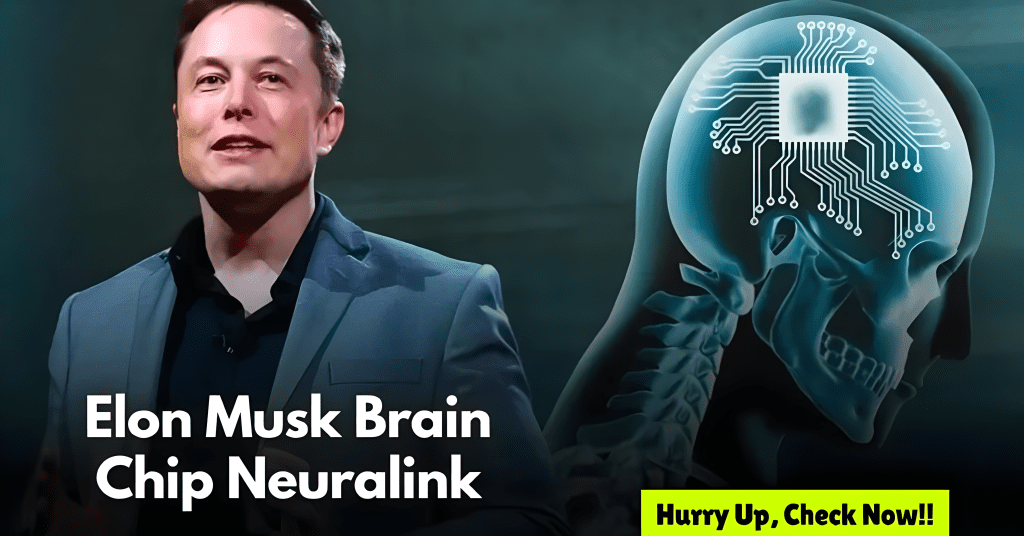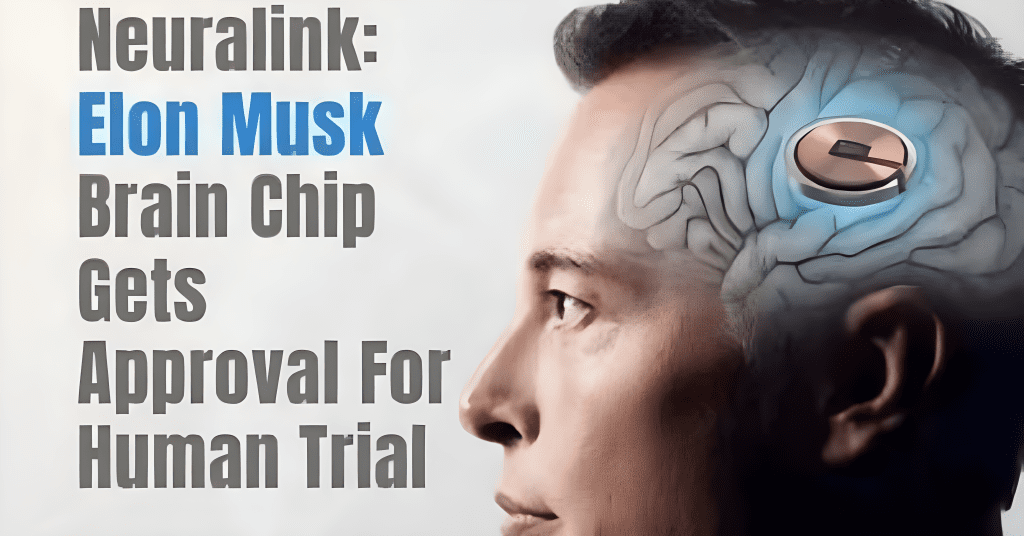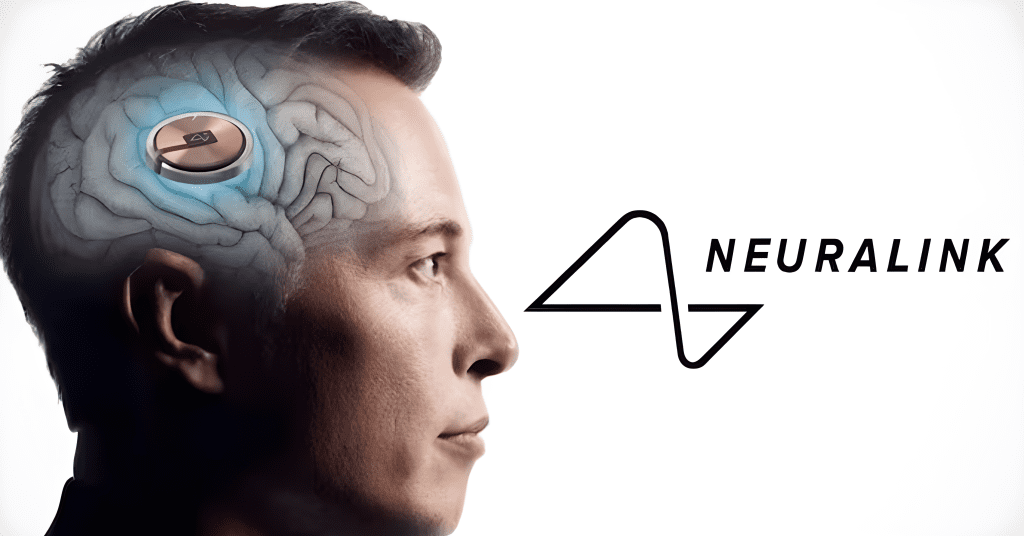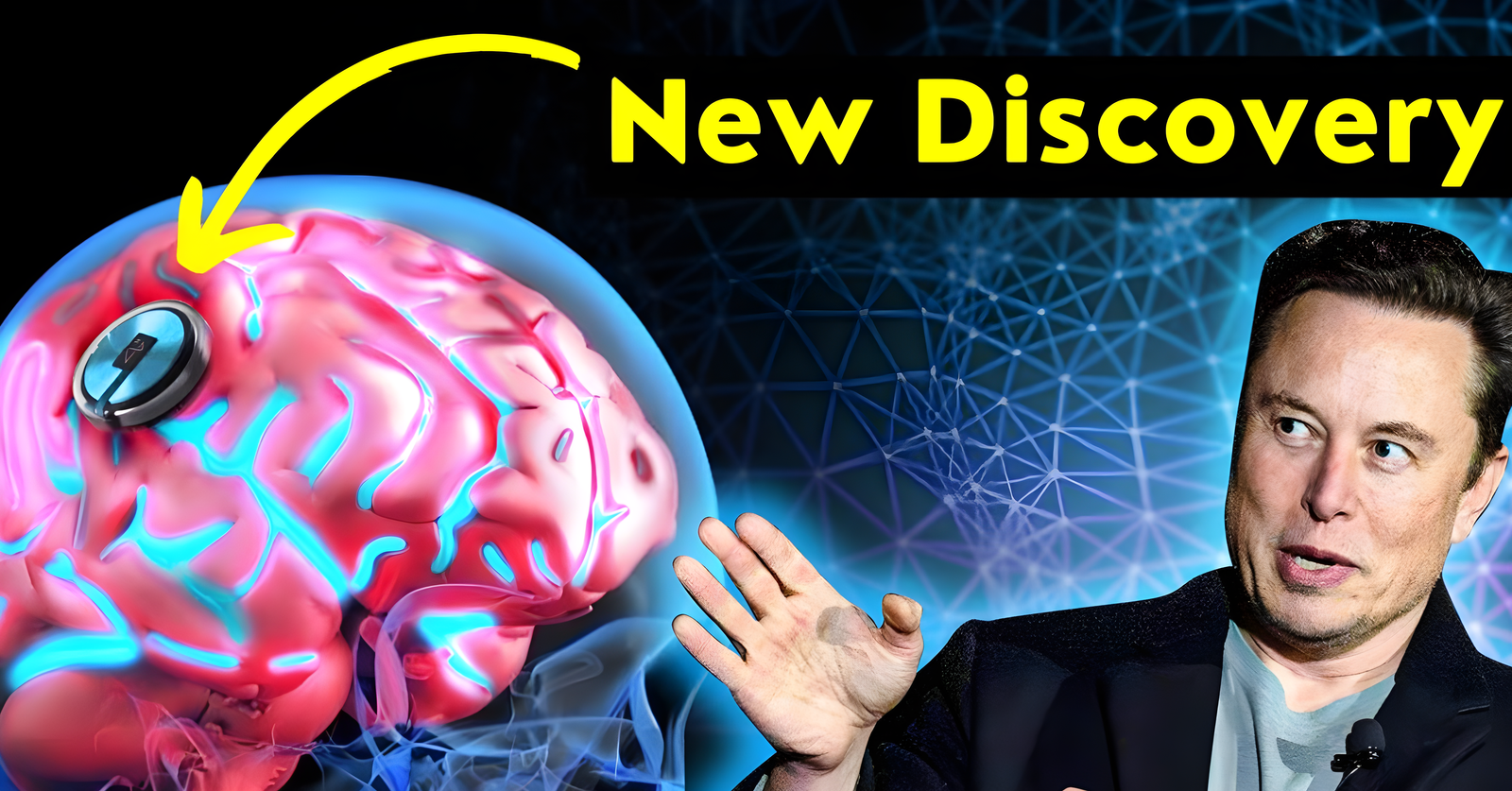Elon Musk’s Neuralink Milestone. Human Trials for Brain Implants Approved. Recent ground-breaking reports reveal that Elon Musk’s creative business, Neuralink, has been given the go-ahead to conduct human trials for brain implants intended to give paraplegic victims back control over their lives. Numerous people who have been coping with the crippling symptoms of paralysis stand to benefit greatly from this wonderful achievement.
We will go deeply into the world of Neuralink in this extensive story for Before It’s News including its goals, the technology that underpins them, the ramifications they have, and what the future may hold for this incredible endeavor.
Table of Contents
- Introduction
- Neuralink: A Brief Overview
- The Quest to Overcome Paralysis
- Understanding Brain Implants
- The Science Behind Neuralink’s Brain Implants
- Elon Musk’s Vision
- Ethical Considerations
- The Regulatory Journey
- Human Trials: A Milestone
- Potential Benefits for Paralysis Patients
- Challenges and Concerns
- Public Perception and Acceptance
- Future Possibilities
- Conclusion
- Frequently Asked Questions (FAQs)
Introduction:
The license to conduct human trials for brain implant technology by Neuralink has once again captured the attention of the world thanks to Elon Musk, the entrepreneurial visionary behind businesses like Tesla and SpaceX. Elon Musk’s Neuralink is been approved.This article examines the relevance of this advancement and how it can improve the quality of life for those with paralysis.
Neuralink: A Brief Overview
Elon Musk established the neurotechnology business Neuralink in 2016. Its main objective is to develop brain-computer interfaces (BCIs), which could fundamentally alter how people interact with technology. BCIs have the potential to enable direct brain-to-machine communication, creating a myriad of new opportunities for those with neurological illnesses.

The Quest to Overcome Paralysis:
Millions of individuals throughout the world suffer from the horrible affliction of paralysis. Paralysis frequently results in a significantly reduced quality of life, whether it is brought on by spinal cord injury, strokes, or other medical disorders. For many years, doctors and researchers have worked to develop a treatment that will allow paralysis patients to regain their independence and mobility.
Understanding Brain Implants:
Neurological devices that are surgically placed into the brain are referred to as brain implants, neural implants, or brain-computer interfaces. These implants have the capacity to capture neural activity, stimulate specific brain areas, or improve brain-to-external device communication. Elon Musk’s Neuralink is been approved. They have enormous potential for a variety of uses, including helping paralyzed people regain control of their body. This transformative technology is making waves in the world of news on tech.
The Science Behind Neuralink’s Brain Implants:
The brain implants made by Neuralink are the product of cutting-edge neurotechnology research. The brain is implanted with these little flexible threads, which are linked to a tiny outside gadget called the Link. Elon Musk’s Neuralink is been approved. The Link enables two-way communication by serving as a bridge between the brain and computers or other devices.
Elon Musk’s Vision:
Elon Musk’s Neuralink can be used for more than only treating paralysis, according to Elon Musk. In his future worldview, people would be able to smoothly blend with AI, improving their cognitive functions and even retaining their consciousness. This bold objective has stirred excitement and ethical discussions.
Ethical Considerations:
It is crucial to consider the ethical implications of the development of brain implant technology. Discussions around Elon Musk’s Neuralink work have centered on issues of privacy, consent, and potential misuse. To ensure the proper development and application of this technology, certain issues must be addressed.
The Regulatory Journey:
The acceptance of brain implant technology for human trials is a substantial advancement in “current latest technology.” To guarantee the security and effectiveness of its products, Neuralink has been subject to stringent regulatory examination. This procedure emphasizes the value of exhaustive testing and adherence to moral guidelines.
Human Trials: A Milestone
For Elon Musk’s Neuralink, the approval for human trials represents a significant advancement. Patients with paralysis who are chosen for these trials will have the chance to take part in a ground-breaking study that may help them regain their movement and independence. The safety and efficacy of the brain implants will be carefully observed during the studies.

Potential Benefits for Paralysis Patients:
For people with paralysis, Elon Musk’s Neuralink brain implants have enormous potential advantages. If these implants are successful, people may be able to use robotic limbs, type on a computer, or even walk once again. This newly discovered independence has the power to change lives and help patients reintegrate into society.
Challenges and Concerns:
Although the idea of brain implants is intriguing, there are some difficulties as well. The risky surgical technique to implant the device necessitates a careful examination of its long-term implications. To ensure widespread benefits, it is also necessary to take into account this technology’s accessibility and affordability.
Public Perception and Acceptance:
The adoption of brain implant technology depends critically on how the public views it. It’s crucial to dispel myths and educate the public on the science behind these gadgets. A crucial component of the technology’s successful adoption is ensuring that society accepts and embraces it.
Future Possibilities:
Elon Musk’s Neuralink adventure is only getting started, and the future is full of opportunities. The potential uses of brain-computer connections increase as technology develops. This technology may have a significant impact on anything from medical treatments to improving human brain.
The Promise of Neuralink: A Glimpse into the Future
As we learn more about Elon Musk’s Neuralink and its ground-breaking brain implant human trials, it becomes clear that this technology has the power to fundamentally alter our understanding of human potential and engagement with technology. In this latest news update we’ll look into the hope that Neuralink has for not only people with paralysis but also for all of humanity.
Expanding the Horizons of Human Potential:
The ability of Elon Musk’s Neuralink brain implant technology to broaden human potential is one of its most fascinating features. Imagine a society in which paralyzed people can once again walk, write, or even play musical instruments. Many people believed that their sense of freedom and normalcy had been permanently lost, but this technology may change that.
Beyond assisting those with physical disabilities, Neuralink’s brain-computer interfaces open doors for enhancing human cognition. With the ability to seamlessly interface with computers and artificial intelligence, individuals may gain access to vast amounts of information and knowledge at unprecedented speeds. This could revolutionize education, research, and problem-solving on a global scale.
Bridging the Gap Between Humans and Machines:
Science fiction has always featured the idea of humans fusing with robots. But Neuralink’s work moves us a step closer to this truth. The brain implants allow for direct communication and interaction between our biological brains and the digital world.
Think about the communication-related possibilities. With the help of Elon Musk’s Neuralink technology, people could communicate with others directly without being constrained by spoken or written language. This could result in more inclusive and accessible communication strategies and has significant consequences for those with communication problems.
Ethical Considerations in the Age of Brain Implants:
While Elon Musk’s Neuralink potential is undoubtedly intriguing, it is important to address the ethical issues that come with such a significant advancement in technology. When it comes to brain-computer interactions, privacy is of the utmost importance. Significant concerns regarding data security and permission are brought up by the possibility of invasive access to a person’s thoughts and neural activity.

The distinction between a machine and a human may also become more hazy as technology develops. Complex issues about identity, agency, and autonomy arise. It is crucial that society has meaningful, open conversations about the moral limits and precautions needed in this new era of neurotechnology.
The Role of Regulation and Oversight:
The process Elon Musk’s Neuralink through to obtain approval for human trials emphasizes how crucial regulatory agencies and ethical monitoring are. A precedent is set for future developments in neurotechnology by the thorough process used to ensure the security and efficacy of brain implants.
Regulations promote public confidence in these new technology while also safeguarding the health of patients. To balance innovation with responsible development, it is essential that scientists, regulators, and ethicists work together.
The Path Forward: Collaboration and Innovation
It is obvious that cooperation and creativity will be essential to Neuralink’s success as it forges ahead with brain implant technology in this latest technology news in india To improve its equipment and processes, the company has already started engaging with researchers and medical specialists. Since the common objective is to enhance the lives of persons struggling with paralysis and related disorders, this collaboration spirit extends to the larger scientific and medical community.
The public’s involvement with and acceptance of this technology are also important considerations in this latest news. Funding, policy selections, and the rate of development can all be impacted by public perception. To debunk myths and promote understanding, open dialogue and education concerning brain implants are crucial.
The Future of Brain Implants: A World of Possibilities
The potential for brain implants is limitless as we look to the future. Brain-computer connections may also enable brand-new types of enjoyment and creative expression outside of medicine. Imagine being able to play music or manipulate virtual reality worlds with your thoughts.
Additionally, as the technology develops, a wider spectrum of people may have easier access to it. Affordably priced brain implants might make improved cognitive abilities more widely available, thereby leveling the playing field in both schooling and the labor market.
The Unprecedented Impact on Healthcare
A new era in healthcare has begun with the clearance of Elon Musk’s Neuralink for human testing. Paralysis has long been one of the most difficult medical diseases to adequately treat. Many people and their families experienced a sense of pessimism as a result of the limitations of current medical interventions. However, there is a ray of hope in the form of Neuralink’s brain implants.
Precision and Personalized Medicine:
The promise for precision and individualized medication offered by Elon Musk’s Neuralink technology is one of its most alluring features. Brain implants, in contrast to conventional therapies, which sometimes take a one-size-fits-all approach, can be customized to meet the individual needs of each patient. The effectiveness of treatment can be greatly improved with this level of customisation.
A game-changer is the ability to fine-tune and modify the brain implants in accordance with a person’s particular neural patterns. It enables more efficient recuperation and rehabilitation. By re-establishing the connection between the brain and the body, Elon Musk’s Neuralink technology attacks the source of paralysis rather than just treating the symptoms.
Redefining Rehabilitation:
Patients with paralysis go through a laborious rehabilitation process. It entails interventions like physical therapy, occupational therapy, and others that take a ton of time and work. The rehabilitation process can be accelerated and improved with Neuralink’s brain implants.
Consider a patient who has suffered a spinal cord damage and is unable to utilize their legs. They can regain control of their lower limbs more quickly and effectively thanks to Elon Musk’s Neuralink technology. As a result of the brain implants, the brain is better able to relearn and adapt to new motor capabilities. This raises the likelihood of recovering complete or partial mobility while also hastening the healing process.
Quality of Life Transformation:
An people with paralysis experiences negative effects on their emotional health as well as their quality of life. Many patients struggle with despair, anxiety, and a feeling of loneliness. The ability to feel agency and freedom has the power to reshape lives thanks to Elon Musk’s Neuralink brain implants.
The capacity to move, eat, and clothe oneself independently can be a significant source of empowerment. It can improve mental and physical health, which can considerably raise one’s quality of life. Patients with paralysis may resume their favorite pastimes and take part more actively in their communities.

Expanding the Reach of Neurological Medicine:
Although neurological medicine has advanced significantly in recent years, many disorders are still difficult to treat. With regard to this new update Elon Musk’s Neuralink brain implants mark a significant advancement in our capacity to treat neurological illnesses. Although so far the primary focus has been on paralysis, there are a wide range of possible uses.
Brain implant technology may be helpful for conditions including Parkinson’s disease, epilepsy, and even some mental health concerns. It becomes possible to modulate and regulate neural activity by directly interacting with the brain’s neural networks, thereby reducing symptoms and enhancing millions of people’s lives.
Beyond Healthcare: The Broader Implications
Neuralink’s technology has an impact that goes far beyond the field of medicine. It has the power to transform a number of facets of our life, including communication, education, entertainment, and more.
Revolutionizing Education:
The digital transformation of education is already underway, and Neuralink’s technology can hasten it much further. Imagine that students could instantly access enormous amounts of material by simply thinking about it. The learning process might be greatly improved and complex subjects could be made more approachable.
Additionally, brain implant technology may be used to provide specialized support for those with learning impairments. This inclusiveness has the potential to transform education and reduce achievement gaps.
Redefining Communication:
Neuralink’s brain-computer interfaces may play a crucial part in the evolution of how we interact. As direct brain-to-brain communication becomes a reality, conventional modes of communication like speaking and typing on a keyboard may become outdated.
Language barriers may disappear in a society where ideas can be transferred immediately, promoting greater understanding and cooperation between individuals of all cultures and tongues. The potential for diplomacy, international collaboration, and conflict resolution is enormous.
Entertainment and Artistic Expression:
Neuralink’s technology has the potential to foster new types of creativity and immersive experiences in the fields of entertainment and artistic expression. The distinction between the digital and physical worlds may grow more hazy as augmented reality (AR) and virtual reality (VR) become more interactive and lifelike.
By producing art or music only from their thoughts, musicians and artists might discover fresh ways to express themselves. Pushing the limits of inventiveness could result in unique sensory experiences for audiences.
Ethical Considerations and Societal Impact:
Such revolutionary potential raises a number of ethical questions and has societal repercussions. A thorough discussion of the issues of privacy, security, permission, and potential misuse is required.
As we share our ideas and experiences via brain implants, the distinction between individual and group consciousness may become more hazy. Protection of mental privacy and personal information becomes crucial.
Conclusion:
With the authorization for human trials of its brain implant technology, Neuralink, a company founded by Elon Musk, has accomplished a crucial milestone. This innovation gives paralysis victims hope and pave the road for a time when people can interact with technology in previously unimaginable ways. The potential advantages are too enormous to overlook, notwithstanding the difficulties and moral issues that still exist.

Thank you for visiting MobitechWorld website! Your presence means the world to us. We strive to provide top-notch services and the latest tech updates. We hope your experience was enjoyable and informative. Feel free to return anytime for more exciting content. Your support keeps us going strong! Cheers!🙏🏼🌟You are welcome to spread the word about this article using the many social media channels, including Facebook, Twitter, Instagram, etc.
What is Neuralink’s primary goal?
The main objective of Neuralink is to develop brain-computer interfaces that permit direct brain-to-device communication.
How do Neuralink’s brain implants work?
The Neuralink brain implants are made up of flexible threads that are inserted into the brain and attached to a Link, an external gadget that allows for two-way communication.
What ethical concerns surround brain implant technology?
Privacy, consent, and the possibility for technology abuse are a few examples of ethical considerations.
What are the potential benefits of Neuralink’s brain implants for paralysis patients?
Potential advantages include the return of independence and mobility, enabling patients to use robotic limbs and carry out daily duties.
What does the future hold for brain implant technology?
The potential applications of brain implant technology are many, ranging from medical treatments to improving human intellect and interacting with AI.





